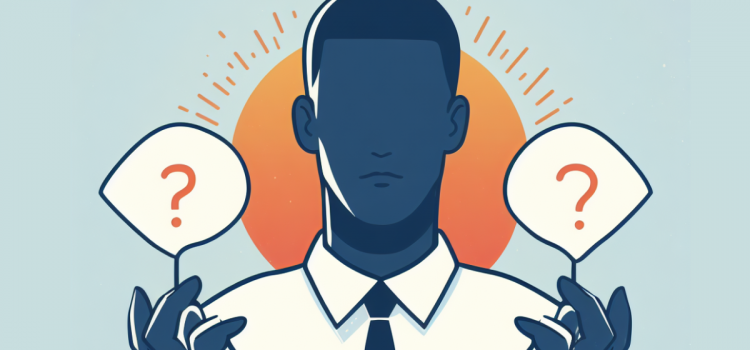

This article is an excerpt from the Shortform book guide to "Alchemy" by Rory Sutherland. Shortform has the world's best summaries and analyses of books you should be reading.
Like this article? Sign up for a free trial here.
How does perfectionism go against our unconscious mind? How do we innately seek safety and minimize failure?
In Alchemy, Rory Sutherland suggests that to solve economic and political problems, we should leverage people’s illogical—and even magical—ways of thinking. One of these is our unconscious desire to go with whatever works rather than the best possible solution.
Keep reading to learn about the satisficing model of decision-making and how to make it work for you.
The Satisficing Model of Decision-Making
One puzzle piece of the mind that you can leverage when trying to influence people is our unconscious preference for safety over perfection. Much of economics relies on the assumption that, when faced with a problem, people work toward a “best possible solution,” but the human brain doesn’t operate that way. Instead, the mind seeks out solutions that are likely to work while minimizing the possibility of failure. It’s a subtle distinction best phrased by the truism, “Perfect is the enemy of good.”
In Sutherland’s discussion of the satisficing model of decision-making, he explores how the unconscious mind veers away from reason to deal with uncertainty, what form this takes in a practical sense, and how the brain’s desire for a “whatever works” solution can be used as a tool for persuasion.
Logical problem-solving works within the confines of well-defined problems where everything comes down to a handful of easily quantifiable variables. In real life, though, every decision involves uncertainty, which makes logical decision-making exponentially more difficult. However, our brains cope with uncertainty far better than any mathematical model. Sutherland contends that, in decision-making, reducing uncertainty is our unconscious goal. Rational optimization is impossible in a dark and scary world of unknowns. So, instead, our brains try to be mostly right while reducing the odds of being catastrophically wrong.
(Shortform note: According to game theory, the satisficing approach to problem-solving isn’t as irrational as Sutherland implies. In Thinking in Bets, poker expert Annie Duke explains that since life is full of uncertainty—and therefore a significant amount of random chance—most decisions you make aren’t either right or wrong, but exist on a spectrum from poor to pretty good. Even in conscious decision-making, Duke argues that measuring and reducing uncertainty should be one of your principal goals so that you can increase your odds of success.)
A World of Trade-Offs
One common way we protect ourselves from a world of uncertainty is to reframe a problem so that, instead of asking the obvious question—such as, “What’s the most efficient way to grow as much food as possible?”—we ask an alternate question that’s easier to answer, such as “What’s the safest way to grow something so that I won’t starve in case of a disaster?” Most of the time, we’re not consciously aware of the alternate questions that guide our decisions; therefore, Sutherland writes, these unconscious questions make many of our conscious decisions seem irrational. However, if you identify people’s unconscious needs, you can address them directly in ways that you’ll find are much more persuasive than dry, analytical logic.
(Shortform note: Behavioral psychologist Daniel Kahneman identified the unconscious substitution of easy questions for hard ones as an automatic process the brain uses to conserve energy and speed up decision-making. In Thinking, Fast and Slow, Kahneman writes that automatic processes such as these operate so quickly that we’re not even aware of them. Our brains learn these mental tricks through a lifetime of experience, but because they rely on generalizations and approximations, our automatic thoughts are prone to error. Unfortunately, Kahneman says that the conscious mind accepts unconscious judgments at face value, a weakness that Sutherland suggests can be exploited.)
People expect life to be messy and that every decision will involve a trade-off. Sutherland says that, to win people’s minds, you should play into that expectation, even if “reason” suggests otherwise. If you’re selling a product or an idea that’s objectively better than the alternatives, present it as a trade-off anyway. We’re wired to believe that everything has a downside, so build a narrative as to why that’s the case, even if doing so involves some distortion. If you admit to imperfection while minimizing people’s feelings of uncertainty, you’ll be speaking to the unconscious mind’s happy place. According to Sutherland, that’s the magic to making sales, winning votes, and changing behaviors.
(Shortform note: Sutherland’s advice to acknowledge a downside, even at times when none exists, goes against the grain of all the literature in praise of positive thinking. But, to the unconscious mind, positivity isn’t the default setting. In The Happiness Trap, Russ Harris explains that, since the brain evolved for survival, we’re primed to watch for threats and plan for the worst. Although these adaptations have outlived their usefulness, if you try to suppress them, you’re going to have a bad time. Acknowledging and accepting the negatives in life can be a healthier approach than denying them, and to Sutherland’s point, it’s also more honest.)

———End of Preview———
Like what you just read? Read the rest of the world's best book summary and analysis of Rory Sutherland's "Alchemy" at Shortform.
Here's what you'll find in our full Alchemy summary:
- Why conventional logic and reason fail as predictors of human behavior
- Why irrational thinking is a secret weapon for persuasion
- Examples of how to apply Sutherland’s methods in real life






